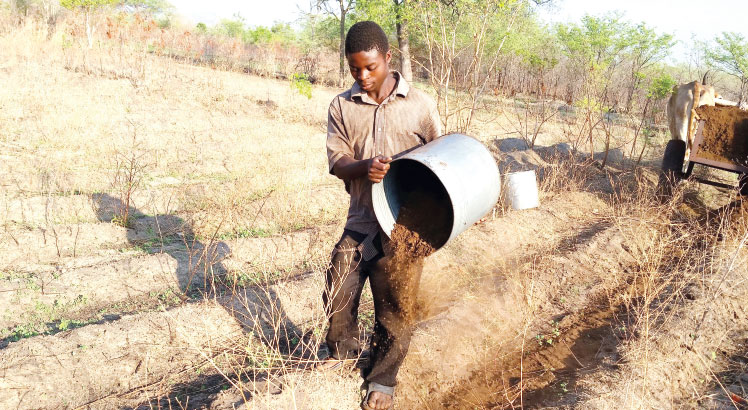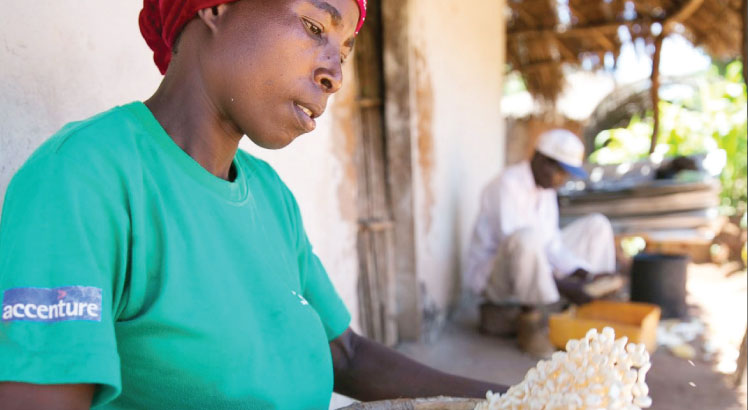Left out of future’s train
Most children with disabilities in Malawi do not attend school or are not identified clearly in school. What is their condition of life and why are they not in school? EPHRAIM NYONDO tells a story of some of these children.
She was born a heavy-set girl with, probably, great dreams like every child. Her poor parents, says the grandmother, wanted her to become a school teacher—teachers are role models in rural areas.
But death, slowly, begun to take away what the parents had envision ed for her. She lost her father at three and the mother at five, just a year before she enrolled for Standard One at Jasi Primary School in Mchinji.
Orphaned too early, Mphatso Patulani was forced to begin a new life with her grandmother, Nabasi. And she started school.
“I began to notice something strange with the girl. She was restless and always appeared dizzy,” says Nabasi.
But as a grandmother—a widow in Chiphutiko Village, Traditional Authority (T/A) Nduwa in Mchinji—it did not dawn on her that the girl was displaying signs of sickness. As a result, she did not take her to hospital. The nearest health centre is located almost 20 kilometres from the village.
Life, albeit with difficulties, went on for the girl until she began to faint in class. This startled the poor and helpless Nabasi who lives in a falling shack and ekes a living out of a small land where she grows maize and sugar cane.
“When I took her to the hospital after she was repeatedly fainting in class, I was told that Mphatso is epileptic,” she says.
News of Mphatso’s disorder spread throughout the village. Her schoolmates started to shun her. She was always alone. Complicated by the withering of her right arm, the dazed Nabasi thought of withdrawing her from school.
“She could not write. Every time she went to school, she could not stay long. She was always brought back because of her fainting,” says Nabasi.
One of her teachers, Grace Mbonera, says it was becoming difficult each day to teach Mphatso alongside others.
“She needed specific attention and, given how huge my class is, it was not possible. Sometimes I could try but the sickness even dealt with her hearing capabilities. The challenge is that I could spend hours trying to instruct her but to no avail,” she says, adding that before the problem struck, Mphatso was a ‘promising pupil’.
Today, aged 12, Mphatso just stays at home. But she says she still wants to go to school.
“I love school,” she says.
She does not know why she wants to go to school. Neither does she know what school would do to her. Yet, she repeatedly says: “I still want to go to school”.
“My grandmother insists that I stay home. But I want to be with friends at school. I don’t want to be at home,” she speaks in a bored tone while facing her wordless grandmother.
She is a helpless, poor old woman. All she has are questions about Mphatso.
“Will she ever go to school in her health state? Or she will remain uneducated?”
Yet it is not just her asking those questions. Elife Lunje from Thyolo is another.
Her 15-year-old daughter, born deaf, dropped from school because she could hardly learn in a normal class.
“The problem is that I don’t know how I can get her to a deaf school. Besides, I do not even have money to pay for her fees,” she says.
Nabasi and Lunje’s stories captures the education challenges children with disabilities face in Malawi because they cannot learn in normal school environments. And it is not just them.
Recently, the Federation of Disability Organisations Malawi (Fedoma) with technical support from the Consortium for Inclusive Education Malawi (Ciem) undertook a comprehensive situation analysis into the inclusive education needs of children with disabilities in three district of Lilongwe, Salima and Mchinji.
The situation analysis revealed that almost 80 percent of children with disabilities in Malawi do not attend school or are not identified clearly in school.
This conclusion, adds the analysis, was based on the difference between the overall percentage of children with disabilities identified as being in school, around two percent in 2008, 2011 and 2013, compared with World Health Organisation (WHO) estimates that identify between 10 and 15 percent of the overall childhood population as having a disability.
The analysis also shows that girls with disabilities are less likely to enrol in school than boys. Girls also seem more likely to drop out of school and therefore, less likely to complete primary education.
Fedoma’s findings are indicative of the scale of education challenges facing children with disabilities in the country. This challenge is compounded with the fact that most of these children come from poor families and their parents cannot send them to disability schools.
So is there a way out for disabled children like Mphatso and Elufe’s daughter to get back into the train of the future?





